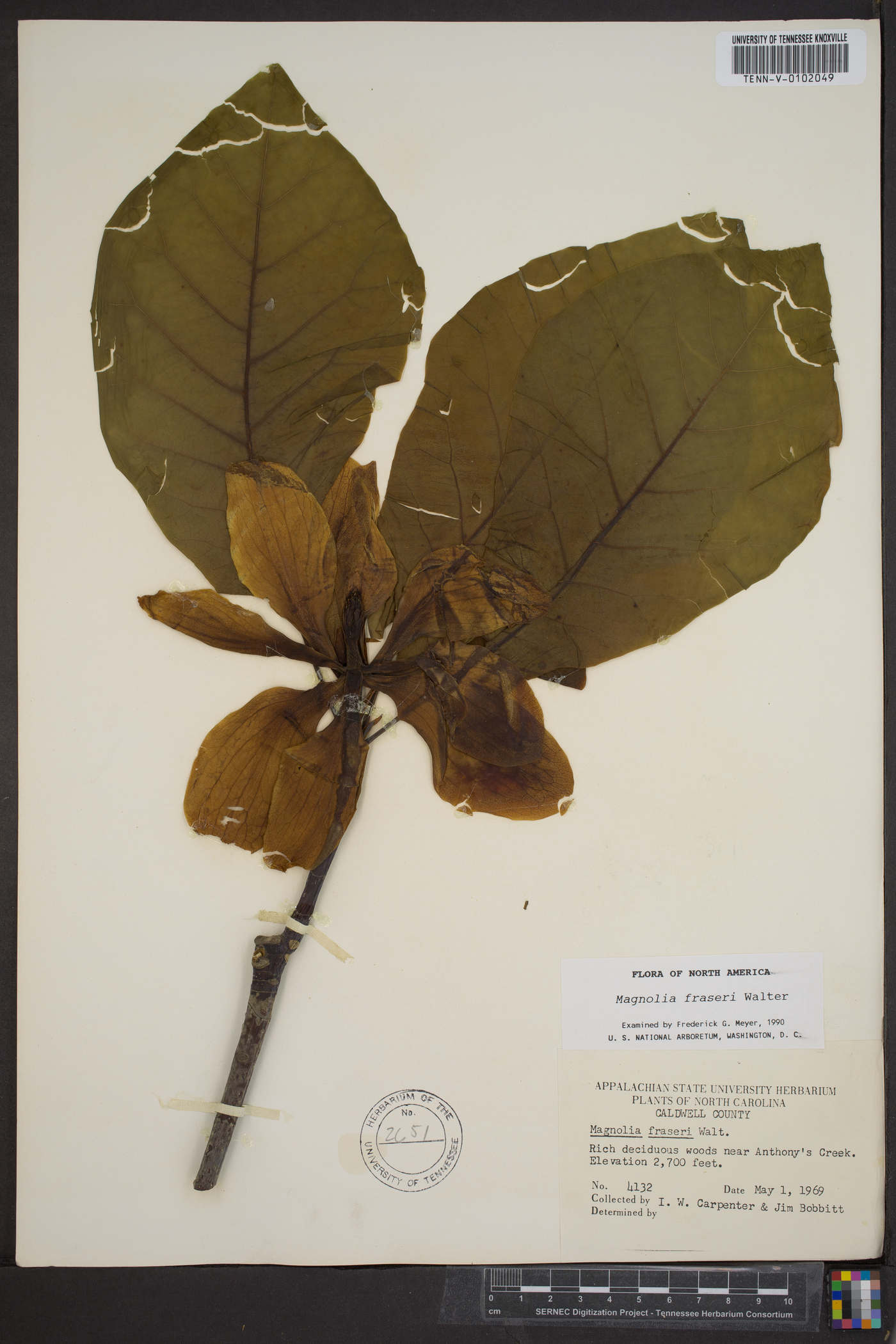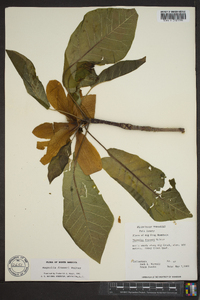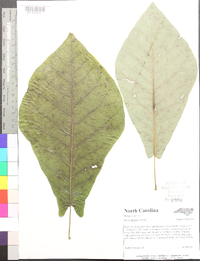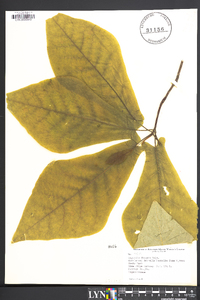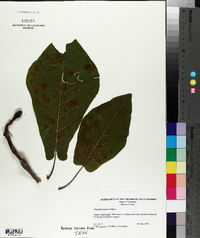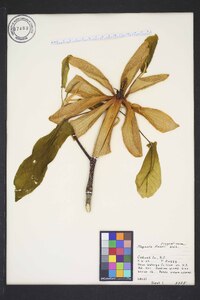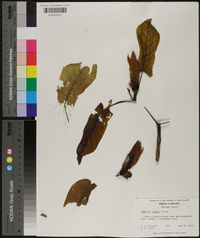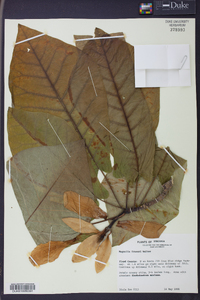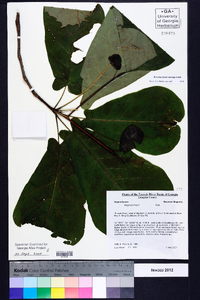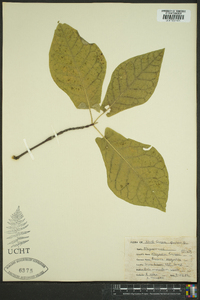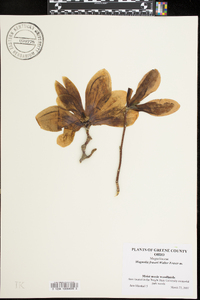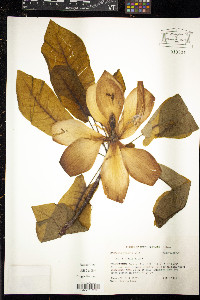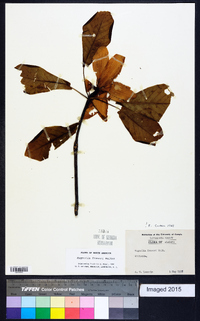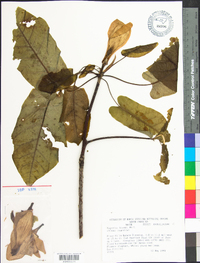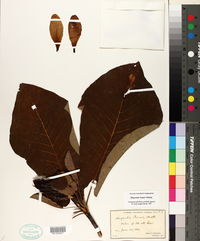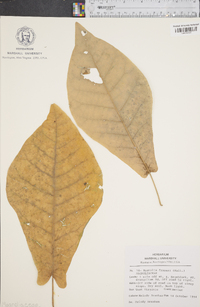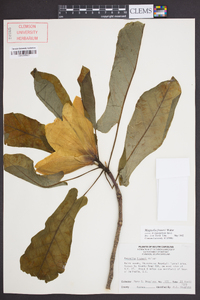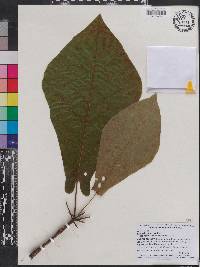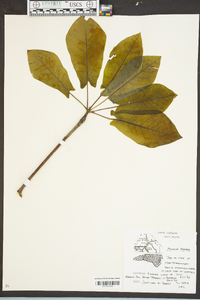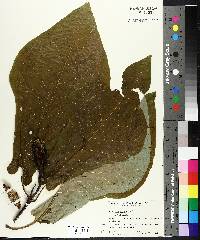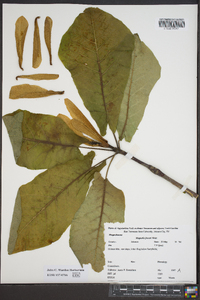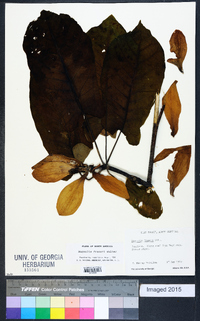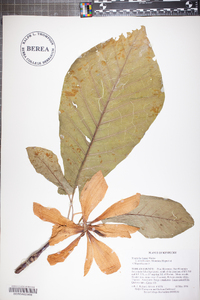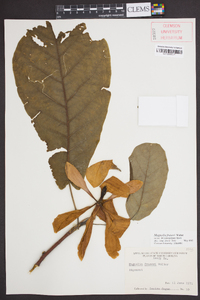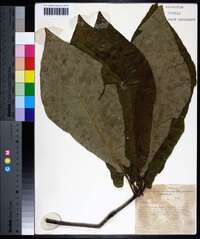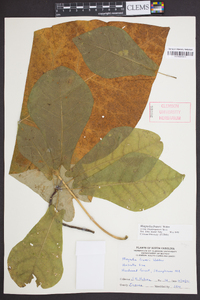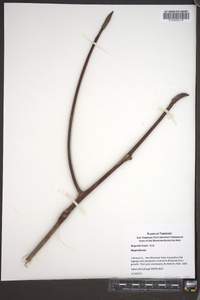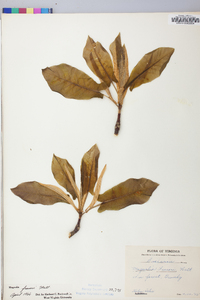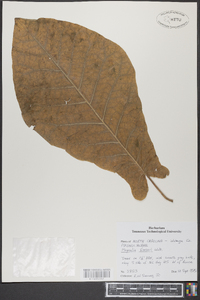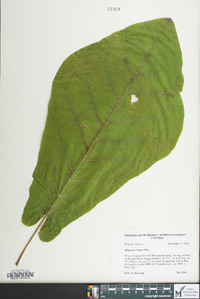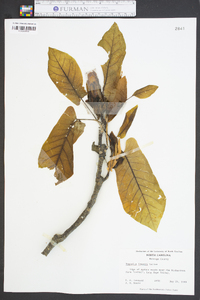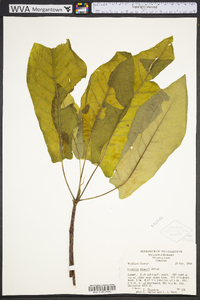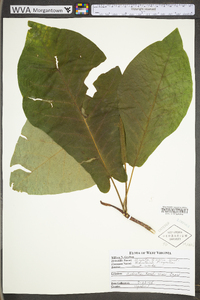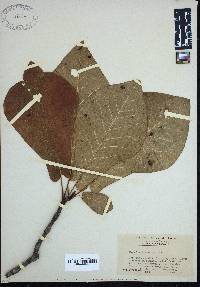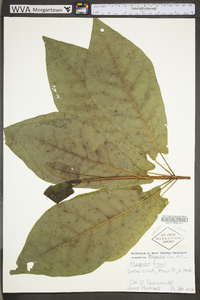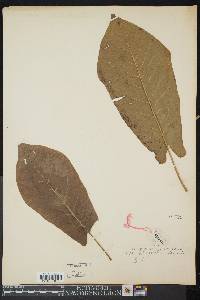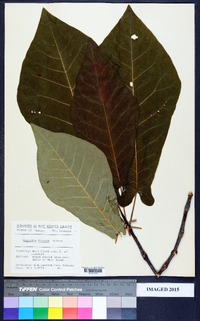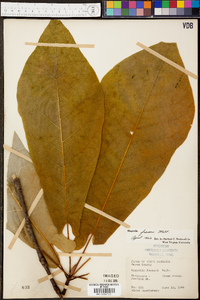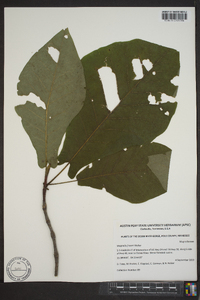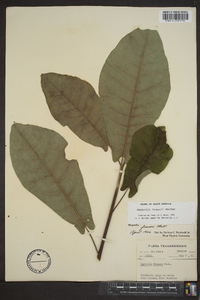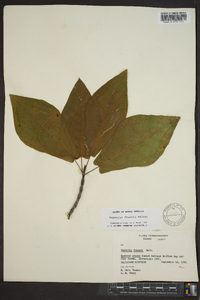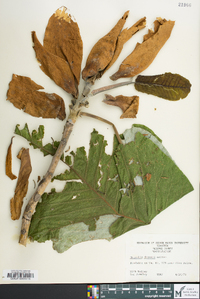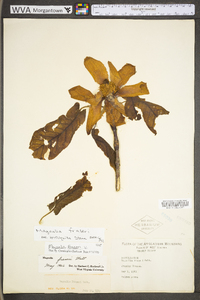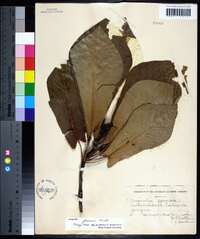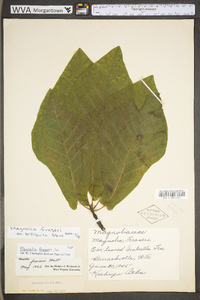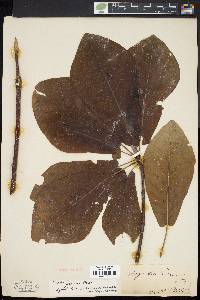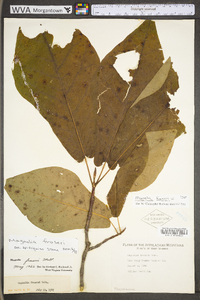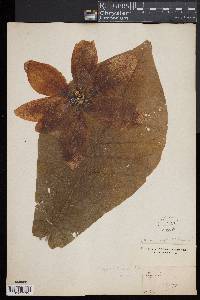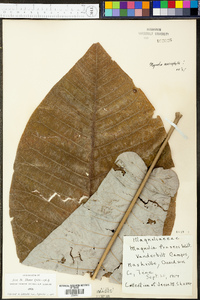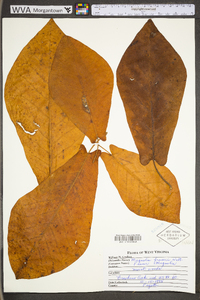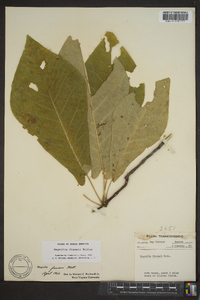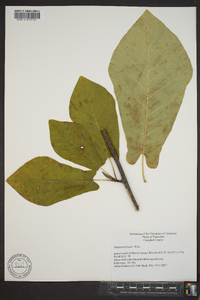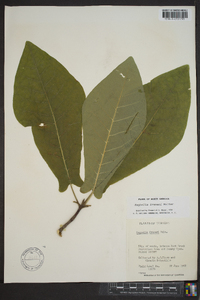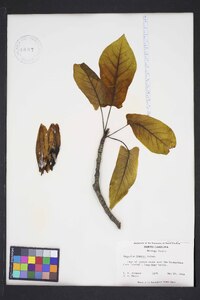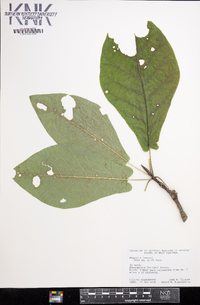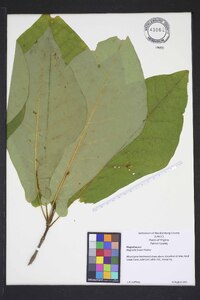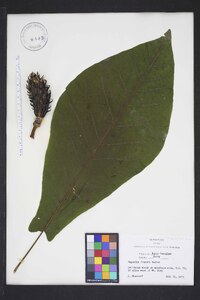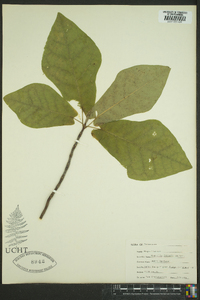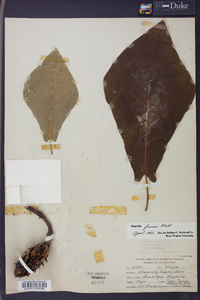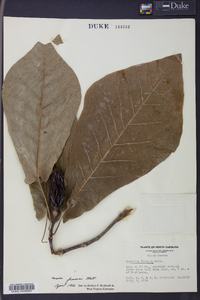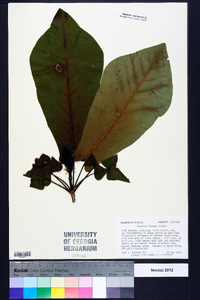
|
|
|
|
Family: Magnoliaceae
Fraser's Magnolia
|
Trees , deciduous, single-trunked, to 25(-32.6) m. Bark gray to brownish, smooth. Pith homogeneous. Twigs and foliar buds glabrous. Leaves crowded in terminal whorl-like clusters; stipules (5.4-)7.6-9.5(-10) × 2-6 cm, abaxially glandular. Leaf blade rhombic-obovate to obovate-spatulate or oblanceolate, broadest near middle, gradually tapering to base, 20-30(-60) × 8-16(-27) cm, base deeply cordate or auriculate to somewhat truncate, apex obtuse to acute or somewhat acuminate; surfaces abaxially strongly glaucous, glabrous, adaxially deep green, glabrous. Flowers fragrant, 16-22 cm across; spathaceous bracts 2, abaxially glandular; tepals creamy white, the outermost greenish; stamens 100-200, 8-14 mm; filaments white; pistils 50-90. Follicetums ellipsoid, 5.5-10 × 2.5-5 cm, glabrous; follicles recurved, long-beaked, glabrous. Seeds lenticular, 7-10 mm, aril red. 2 n =38. Flowering spring. Rich woods and coves; 300-1520m; Ga., Ky., N.C., S.C., Tenn., Va., W.Va. Magnolia fraseri , a tree of the Appalachian mountains and upper piedmont, and its close congener M. pyramidata , of the lower piedmont and coastal plain, are sometimes confused taxonomically, but they differ in a series of good characters. Some investigators have treated them as geographic varieties or subspecies of M. fraseri . Magnolia fraseri differs from M. pyramidata in being a much larger tree with wide-speading branches, different leaf shape, larger flowers, more numerous stamens, and larger follicetums. In their present geographic distribution, these taxa are allopatric. In some localities M. fraseri may be abundant, as in the area near Sugar Grove, Smythe County, Virginia, where hundreds of specimens occur. It is a desirable flowering tree, occasionally cultivated. The largest known tree of Magnolia fraseri , 32.6m in height with a trunk diameter of 94 cm, is recorded from Great Smoky Mountains National Park, Tennessee (American Forestry Association 1994).
Small tree to 15 m; twigs glabrous; winter terminal bud 3-5 cm, glabrous; lvs ±crowded beneath the fls, deciduous, thin, rhombic-ovate, at anthesis 1-2 dm, at maturity (2)2.5-4 dm, ca half as wide, acute to obtuse, concavely narrowed from above the middle to the base, where prolonged into short, rounded basal lobes, green and glabrous on both sides; fls white, fragrant; pet 6-9, elliptic, 7-10 נ3-4 cm, somewhat clawed; style thick, persisting as a beak on the glabrous follicle; fr-cone ellipsoid, 5-10 cm; 2n=38. Rich woods; mts. of w. Va. to e. Ky., s. to n. Ga. and Ala.; locally naturalized in Md. May, June. Gleason, Henry A. & Cronquist, Arthur J. 1991. Manual of vascular plants of northeastern United States and adjacent Canada. lxxv + 910 pp. ©The New York Botanical Garden. All rights reserved. Used by permission. |
This project was made possible in part by the Institute of Museum and Library Services [MG-70-19-0057-19].
Powered by Symbiota

